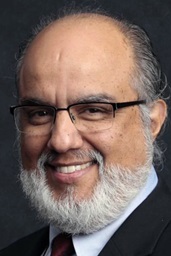I have been and will remain a supporter of theCall to Actionand the subsequentCongregational Plan for Renewed Vitality. I support these efforts, even though I do not completely endorse them.
Why is it that some have enthusiastically reported that the conversations related to the establishment of goals for renewed vitality have sparked hope in their congregations, while others see the setting of these goals as a mindless exercise that reminds them of a secular plan to simply increase numbers?
The answers to those questions, and our ability to meet the challenge we now face, appear centered around at least three disconnects within our church.
A theological disconnect
First, there is among manya theological disconnect with the Call to Action. From the day that I entered into fulltime Christian ministry, I have embraced the biblical understanding of God’s claim on humanity in the Old Testament story and Jesus’ incarnation of that claim as found in the New Testament. The emphasis placed on the “loners, losers and lost ones” in Jesus’ practical ministry on Earth led him to leave his disciples with two great commandments: to love God and love neighbor — and one great commission: to make disciples.
Resources on restructuring proposals
- Call to Action background
- Call to Action legislation
- Apex operational assessment
- Call to Action prayer guide
- The 2012 General Conference website
Previous United Methodist News Service stories
This commission of making disciples has nothing directly to do with growing the membership or worship attendance in our churches. Yet, membership and worship gains are, in reality, natural byproducts of disciple making! In the 21st century, this does not demand conformity with our existing programs and worship offerings as much as it demands creativity in reaching people where they are and creating “new places for new people.”
I believe God calls us to lay claim upon those who do not know Christ as a focal point in our ministry. This means that setting numerical goals for membership, worship, baptism and so forth can and should be a way to motivate disciple-makers to make disciples, especially when framed from a theological — and not a metrics — viewpoint.
A connectional disconnect
Second, there is a connectional disconnect. When the discussion around the Call to Action took place at the Council of Bishops, I was “all in” theologically but not totallyconvinced practically.
When the suggestion came to ask for tangible goals as a way of formalizing that “call to act,” I had real hesitations. It was a logical step, but had we adequately addressed the spiritual crisis behind our decline? When it came time for a vote, I reluctantly agreed, even though I had substantial and significant reservations.
Yet, I came home to my annual conference and shared with our leadership that we were going to support this movement fully. Why did I do that in the midst of significant hesitations? The answer was simple: I believe in “connectionalism” and understand completely the clear need we have on all levels of the church’s life to hold leaders accountable to the covenant we share within that connection.
While there is plenty of room in our system for independent thinking, there are also some clear historical and theological premises that drive us to conformity within our connection. The pace was set from the beginning by our founders. John Wesley had requirements for those who would be involved in his class meetings. Francis Asbury shipped pastors back to England who would not conform to the emerging itinerant system.
If connectionalism is to thrive as it should, it will continue to require conformity to the directions — both theological and practical — that the connection determines.
In the modeling of our understanding of ministry, we are called to submit ourselves willingly to the direction set by the call of God and those placed in leadership over us. Read again the Wesleyan Covenant Prayer — “let me have everything, let me have nothing.”
A practical disconnect
Third, there is a practical disconnect. I believe there are times when people can articulate what they want but can’t figure out how to get what they want. There are times when people do not know what they want until they see it presented to them. There also are times when people say they want something, only to discover that it’s not what they wanted after all when they see it unfolding.
All of that is to say that people need leaders who are willing to lead out of vision, hope and practicality. A leader can cast a grand vision filled with hopeful platitudes for the future and get the audience to respond in the short term until they get home. “The speech was great, and we agreed to everything said, but how do we do it here? I love the thought of the end result she talked about, but how do we get there? Where do we begin?”
Before you know it, grand visions and hopeful platitudes turn from enthusiastic cheers of joy to depressed cries of uncertainty and confusion. What was meant to motivate has led to a feeling of defeatism because the practical road map was not provided.
During Council of Bishops meetings over the last year, we have been in active conversations about the degree of vitality found within our various episcopal areas. We have discovered that some areas are doing better than others are. The same is true for our local churches. Some are showing greater signs of vitality than others are. Yet, there is plenty of work to be done to stimulate activity, provide necessary support and increase vitality within all of our local churches. It isn’t time to celebrate any measure of vitality found in one place at the expense of another. On all levels of the church’s life, we are tempted by defeatism and negativity.
Many of our laity and clergy have inherited a style of leadership that has not emphasized or identified with “disciple making” as a requirement. Transforming this will take a deep commitment among our leadership to keep this agenda before our people. It will require our leaders to help our people set tangible, realistic, practical goals that they can work toward — not as a mechanism to save The United Methodist Church but as a passion to realize clearly that God requires disciples to make disciples.
Leaders on all levels of the church’s life and work must come to a deeper understanding of what we are doing and why we are doing it.
We must have robust, carefully conducted conversations that involve listening to all, rather than making assumptions about what we think is wrong. To establish this discipline will require us closely to self-examine practices and motives before we point the finger at someone or something else.
The ongoing discussion about congregational vitality, the development of goals and the subsequent determination of numerical metrics is absolutely critical across the denomination and within each of our local churches.
But we also need practical road maps, best practices, models of faithfulness and realistic expectations attached to each goal. We didn’t get into this dilemma of decline overnight, but by taking some simple, practical steps, we can begin moving in the right direction, into the future that God has planned for us.
* Bickerton is assigned to the Pittsburgh Area and serves on the United Methodist Commission on Communication.
Like what you're reading? Support the ministry of UM News! Your support ensures the latest denominational news, dynamic stories and informative articles will continue to connect our global community. Make a tax-deductible donation at ResourceUMC.org/GiveUMCom.



